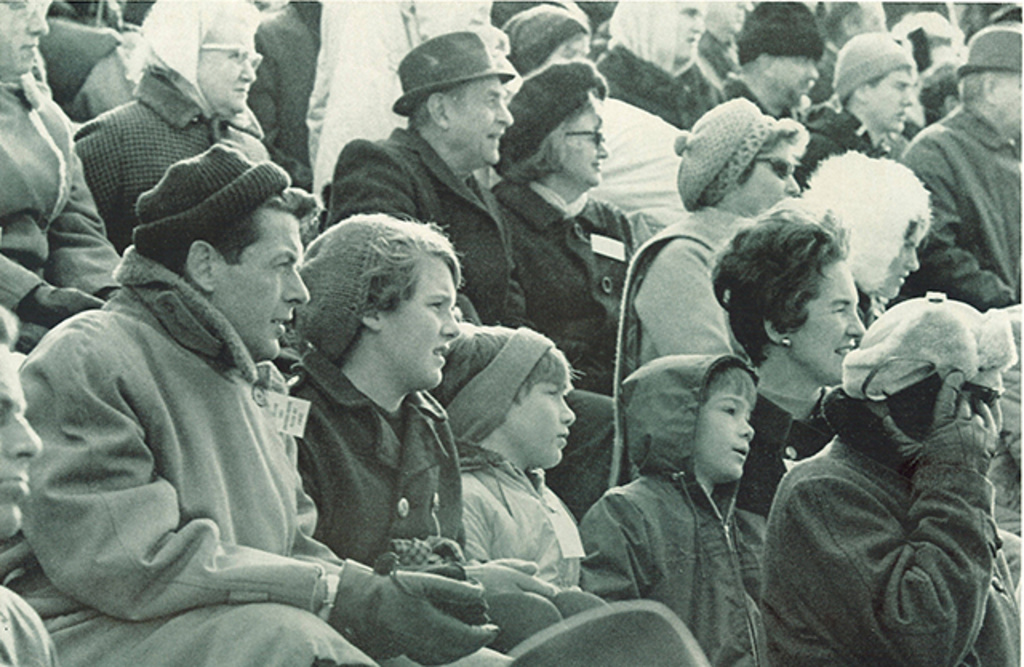Though Sandy Boyd’s accomplishments have been many, his wife, Susan, made her own impact on the life and the history of the University of Iowa.
Maybe more so, says Sandy.
“None of what I’ve done could have happened without Susan,” he says. “She has been much better at her end of the business than I have been at my end, including her role as a patient representative at University of Iowa Hospitals and Clinics, as a writer, and, most importantly, as a UI friend-maker.”
Susan Kuehn was born in Minneapolis in 1926 and graduated from Wellesley College in 1947. She wrote short stories that appeared in publications such as Harper’s, Redbook, and Mademoiselle, back when consumer magazines published short fiction. Two of her stories were honored with O. Henry prizes in in 1946 and 1949, and one was published in Best American Stories of 1951. She studied writing under Robert Penn Warren and Saul Bellow at the University of Minnesota and under Wallace Stegner at Stanford University.
Susan also worked as a reporter for the Minneapolis Star and Tribune from 1947 to 1954. She started covering general-assignment stories, fires, traffic accidents, speakers, and other types of breaking news—rare at a time when female journalists were usually confined to the Women’s pages. She eventually was assigned to the Women’s Page, writing a column about whose parties were newsworthy and who was planning a vacation as well as doing sidewalk interviews on unimportant subjects. The work grated on her—she called it “ghastly” in a 1972 interview with the Daily Iowan—and she eventually returned to writing more substantive features and reviewing books.
She met Sandy in 1953 through friends (he was practicing at a Minneapolis law firm), they married in 1954 and moved to Iowa City later that year when he was hired by the UI, even though she had been to the state only once, to attend a wedding in Ames. She quickly settled into the life of an academic wife and, soon, a mother with three children—Willard III (Bill), Tom, and Betsy—and a dog, Madeline (named after the Apostle Island in Lake Superior where the family still vacations every summer). She drove car pools, baked cookies for school, cooked family dinners, and taught Sunday school at the Unitarian Universalist Church, where she volunteered as the children’s worship director (although Sandy continued attending the First Congregational Church).

She also saw herself as something of a Welcome Wagon for new faculty.
“She was incredibly welcoming, made us feel at home, and introduced us to other people,” says law professor Arthur Bonfield, who joined the law faculty in 1962. “She was a wonderful facilitator with new people.”
N. William Hines remembers the warm welcome Susan gave his young family when he also arrived to join the law faculty in the summer of 1962, including the use of their family home while the Boyds were away vacationing for several weeks.
“Their generosity to our family was a godsend,” says Hines, the College of Law’s dean emeritus.
But Susan also found the time to keep writing, sharing her secret in an article in Writer’s magazine in 1959, “Authoress in an Apron.” She explained that she carved out at least one day a week to devote to writing by hiring a babysitter and taking her typewriter to a quiet place for the morning. First it was the University Library, then, when the family moved to a larger house, the spacious attic, which she turned into a room of her own.
“It forced me to write whether I was in the mood or not,” she told the DI in 1969.
Her life became more focused on social duties after she became the university’s first lady in 1969, attending events on and off campus and meeting with visiting dignitaries while raising her family. She was active in the United Nations Association and participated in the University Club, serving a term as president, and she wrote a script for a play on women in Iowa’s history. She gathered hats from famous women in the U.S. for a benefit auction, volunteered at UI Hospitals and Clinics, and eventually joined the Patient Representative staff, becoming the university’s first presidential wife to have a paid job.
She played tennis, joined two study clubs, and took classes. She was on the board of the University of Iowa Foundation and helped to found the UI President’s Club.
“We frequently commented that Susan was truly Supermom,” says Hines.
And she became an expert at hosting dinners, one of the primary responsibilities of a presidential wife at the time, usually cooking the meal herself and under all circumstances providing a warm welcome.
“She was always, always the most gracious of hosts,” says Bonfield.
She especially enjoyed the informal dinners and receptions she and Sandy hosted for students in the basement of the President’s House.
“There’s a pool table down there and we just throw a table cloth over it,” she told the DI in 1973.
The work was trying at times for both Boyds, but they stood by each other always, alternately providing whatever support or independence was needed to move the university and their family forward.
“I admire his ability to deal with the hardest thing right at the beginning,” Susan told the DI in 1973. “I admire the way he’s willing to listen. He’s very patient.”
“I could never have been president without Susan,” Sandy told the Cedar Rapids Gazette earlier this year in a story marking their 62 years of marriage. “Or done anything without Susan.”